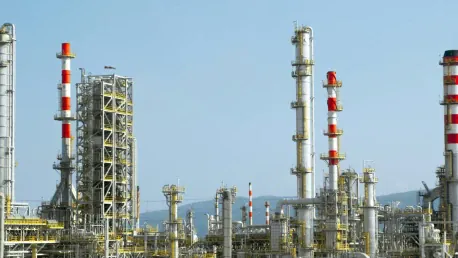In a recent study by ecologist Dr. Kevin Timoney, the Alberta Energy Regulator (AER) has been accused of systematically underreporting the number and volume of tailings spills in northeastern Alberta. The report scrutinized data from 514 bitumen tailings spills documented by the AER, challenging the regulator’s claims of minimal environmental impact and effective recovery in 75% of cases. The study suggests that these assertions are based on dubious evidence and calls into question the integrity of AER’s reporting practices.
Discrepancies in Reported Data
Data Sources and Findings
The study utilized information from various sources including the Alberta Environmental Management System (EMS) data, which covers the period from 1996 to 2012, AER’s Field Surveillance Inspection System (FIS) data starting from 1975, and a freedom of information request completed in June 2023. The results indicated that the actual number of spills and their volumes were considerably higher than what had been reported by the AER. For instance, out of the 514 spills recorded in the FIS, nearly 302,000 cubic meters (301,755,000 liters) of tailings were released, averaging approximately 77.4 spills per year.
One glaring example of this discrepancy involved an incident from 2018. The AER reported a tailings spill of 44,596 cubic meters, whereas the data obtained through the freedom of information request revealed that the actual volume was 4,459,680 cubic meters, a figure that was 100 times larger than what had been initially documented. The study also found inconsistencies within the FIS records themselves, where the FIS recorded 514 spills, but the freedom of information request data revealed 989 primary spills, including 627 tailings, 215 process water, and 89 bitumen slurry spills.
Criticism of AER’s Inspection and Reporting Practices
Dr. Timoney’s study underscored significant gaps in the AER’s data, highlighting the fact that the regulator’s FIS data had missed 115 tailings spills altogether. Remarkably, this included two major spills from Kearl in 2022 and 2023, as well as a lack of proper accounting for a total of 456 spills. The report further argues that AER inspects a paltry 3.2% of all tailings spills, with photographic evidence showing that 41-54% of these spills resulted in actual environmental harm. Timoney has called for the establishment of a new, genuinely independent regulatory body, criticizing the current AER for being too closely controlled by the industry that it is supposed to regulate.
Responses from the Industry and Government
Ministry of Environment’s Standpoint
In response to the study’s findings, the Ministry of Environment has proclaimed that Alberta’s oil sands are among the most intensely monitored in the world, emphasizing the existence of stringent processes aimed at preventing and managing spills. The ministry maintains that these processes ensure high levels of environmental protection and sustainability. Despite this stance, the findings from Dr. Timoney’s study cast serious doubt on the actual effectiveness of these mechanisms.
Renato Gandia, a representative from the AER, has defended the agency’s practices, stating that inspections are routinely conducted to ensure compliance with established remediation regulations. According to Gandia, these inspections are part of a comprehensive approach to restoring affected areas and maintaining environmental integrity. However, critics argue that the frequency and thoroughness of these inspections are insufficient given the sheer volume of spills and the potential long-term ecological damage.
Identifying Key Polluters
The study also identifies the companies most frequently responsible for these spills. Suncor leads the list with roughly 32% of the spills and a staggering 49% of the total tailings volumes spilled. Canadian Natural Resources Ltd (CNR) follows, being accountable for about 15% of the spills and 6% of the total volume. Shell is also a significant contributor, responsible for nearly 15% of spills and 10.5% of the total volume. Other notable companies named in the study include Imperial Oil and Canadian Natural Upgrading Ltd (CNUL), each contributing substantial amounts to the total spillage.
Reports of delays in spill reporting further complicate the issue. Only 58% of the spills were reported on the same day they occurred, with some incidents being reported as late as 30 days after the fact. Such delays hinder timely remediation efforts and exacerbate the environmental harm caused by these spills. The lingering question remains why such delays occur and whether they reflect an attempt to minimize regulatory scrutiny or a systemic inefficiency within the reporting process.
Call for Regulatory Overhaul
Need for New Regulatory Practices
The study concludes with a strong call for a comprehensive review and overhaul of the current regulatory practices. Given the pervasive underreporting and the significant environmental impacts identified, Dr. Timoney argues that a new, independent regulatory body is necessary to ensure transparency and accountability. This new entity should be free from industry influence and possess the authority to enforce stringent environmental regulations effectively.
The persistent issues with AER’s reporting and inspection practices reveal a deeply flawed regulatory framework. The discrepancies between reported and actual spill volumes, the underreporting of incidents, and the insufficient frequency of inspections all point to a regulatory body that is failing in its mandate to protect the environment. By implementing a new oversight structure, Alberta could better safeguard its natural resources and ensure that the oil sands industry operates in a sustainable and environmentally responsible manner.
Long-term Environmental Implications
In a recent study conducted by ecologist Dr. Kevin Timoney, serious allegations have been made against the Alberta Energy Regulator (AER). Dr. Timoney accuses the AER of systematically underreporting the frequency and volume of tailings spills in northeastern Alberta. The study analyzed data from 514 bitumen tailings spills documented by the AER, challenging the regulator’s assertions regarding the environmental impact and the effectiveness of spill recovery efforts, which the AER claims to be successful in 75% of cases. Dr. Timoney’s research casts doubt on these claims, suggesting they are based on questionable evidence and lacking transparency. This has raised significant concerns about the integrity of the AER’s reporting practices and their commitment to environmental stewardship. Timoney’s findings suggest that the regulatory agency’s reports might not fully represent the true extent of pollution and environmental damage caused by these spills. The study urges a re-evaluation of the AER’s oversight and the actual impact these spills may be having on the local ecosystem.









